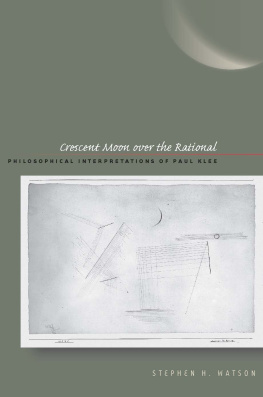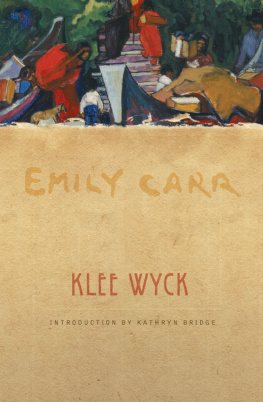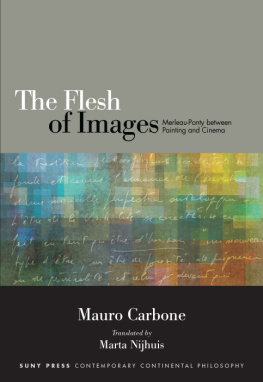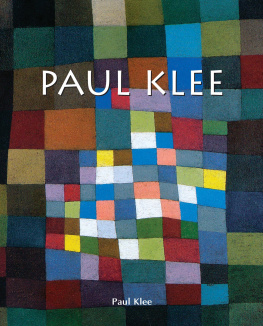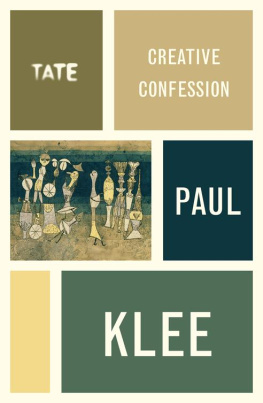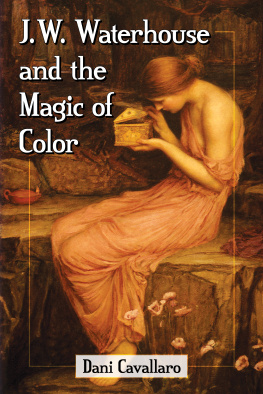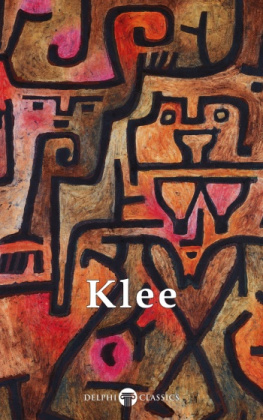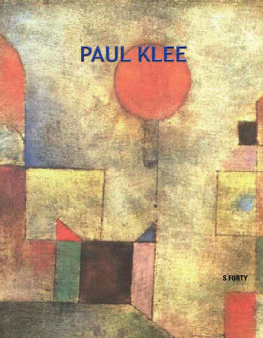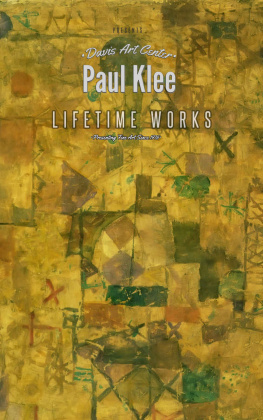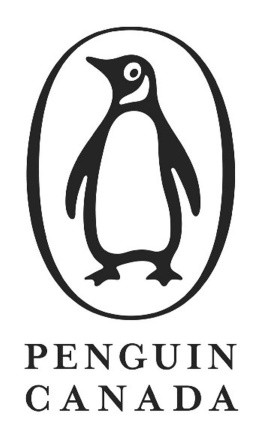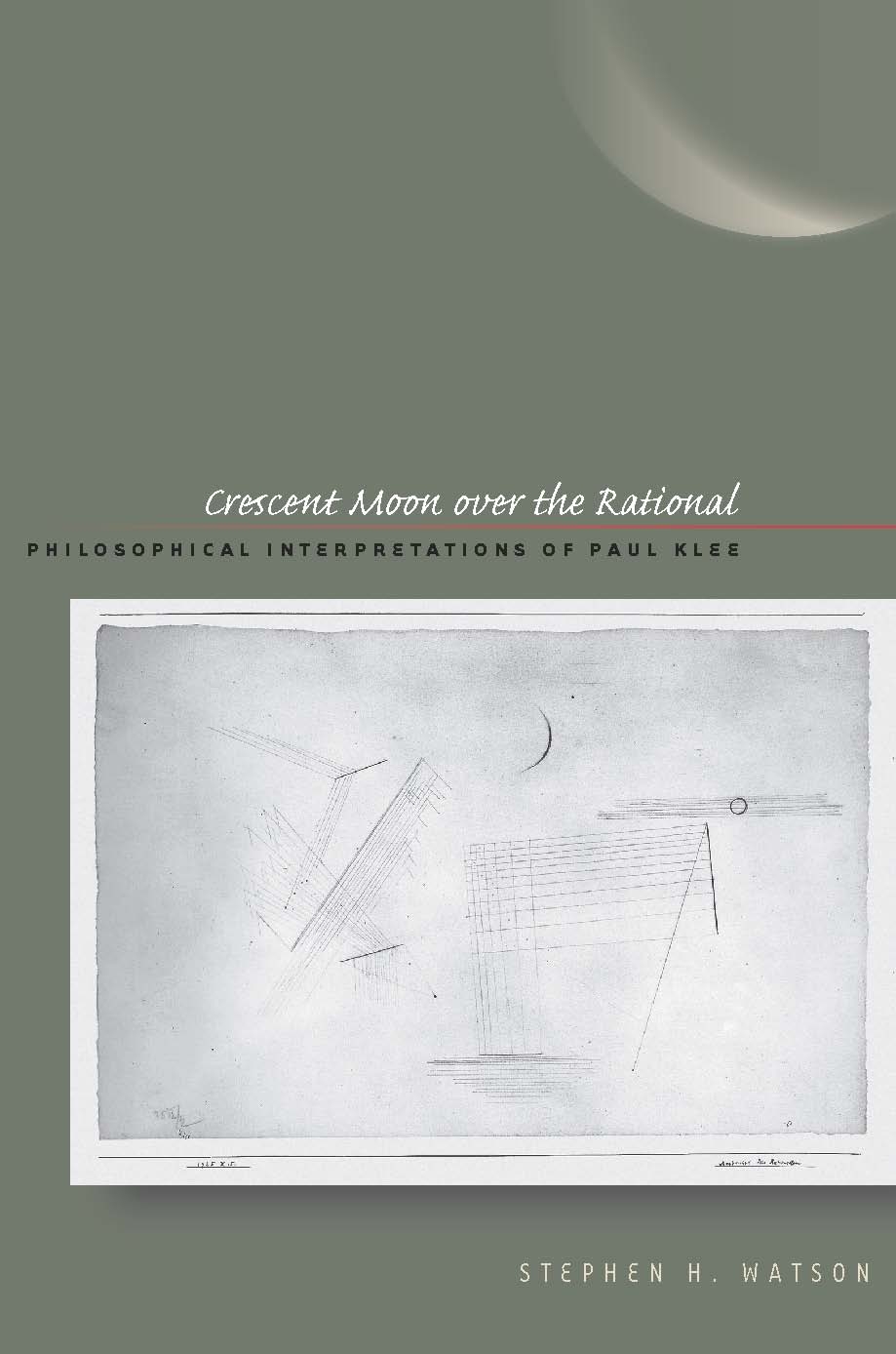Martin Heidegger, Toward the Definition of Philosophy , trans. Ted Sadler (New York: Continuum, 2000), p. 99.
These terms, which were revived by Michel Foucault in a famous article on Deleuze with the same title, derive from Francis Bacons New Organon . It alerts us to the complicated relation to science (and technology) that both philosophy and aesthetics will have in modern philosophy. Klees work would provide further evidence of this complicated relationship. Foucault sought to find in Deleuze a new philosophy of the event that had eluded neopositivism, Phenomenology, and the philosophy of history alike. We are reminded that Bacons own concerns with philosophy as theatrum or spectacle emerged concomitantly with his experimentalism and his critique of the syllogism as the standard of the rational. This, in turn, generated what he called the problem of the interpretation of nature, one arguably still contested in the wake of neopositivisms and Phenomenology. Such concerns about experimentalism, as Foucault or Deleuze would attest (both of whom appealed to Klee in this regard; Klee himself spent considerable time worrying about artistic experiment) would thus accompany the history of modernity both at its inception and in its aftermath. See Michel Foucault, Theatrum Philosophicum in Language, Counter Memory, Practice , trans. Donald F. Bouchard and Sherry Simon (Ithaca: Cornell University, 1977). See Francis Bacon, The New Organon , para. 615.
Will Grohmann, Paul Klee (New York: Harry N. Abrams, 1955), p. 183.
O.K. Werckmeister, Walter Benjamin, Paul Klee, and the Angel of History, Oppositions , No. 25 (Fall 1982), p. 104. Without denying their metaphysical differences, Werckmeister concludes concerning their theoretical projects: Both men relied on the validity of a subjective stance for the simultaneous work of total critical destruction and total synthesis (122).
As will become further evident here, I agree with the attempts of recent thinkers to stress the links (albeit not ones of simple continuity) among classical German thought, German Romanticism, and more recent thought. See Manfred Frank, The Philosophical Foundations of Early German Romanticism , trans. Elizabeth Millan-Zaibert (Albany: SUNY Press, 2004). Also see Philippe Lacoue-Labarth and Jean-Luc Nancy, The Literary Absolute: The Theory of Literature in German Romanticism (Albany: SUNY Press, 1988).
Compare in this respect Klees 1927 Limits of Reason (1927: 293), where the same iconography is at play, with the exception of an abstract face that appears at the bottom and ladders that lead toward a heavenly body. The celestial moon, in various phases, plays a role in a number of Klees works.
One thinks here, for example, of the ongoing debates among Hayden White, Stanley Fish, and Richard Rorty. A recent discussion can be found in Hayden White and the History / Literature Debate , ed. Kuisma Korhonen (Amsterdam: Rodopi, 2006).
The neo-Kantian background of the distinction between form and content, universal and particularism has been established by a number of scholars, among them Michael Friedman. See his A Parting of the Ways : Carnap, Cassirer, and Heidegger (Chicago: Open Court, 2000). Within these protocols, following Husserl and Heideggers rejection of Natorp, I argue for a genetic, problematical, and developmental account of the concreteand, in particular, the understanding of Klees work.
Herbert Read, A Concise History of Modern Painting (New York: Praeger, 1959), p. 186.
Clement Greenberg, Essay Two, in Five Essays on Paul Klee , ed. Merle Armitage (New York: Duell Sloano & Pearce, 1950), p. 60.
As has been well known since Kants Critique of Judgment , the task of interpreting an event that provokes thought into reflection, one for which we have no determinate concepts in advance, is a matter especially exemplified by aesthetic rationality. See Immanuel Kant, Critique of Judgment , trans. Werner S. Pluhar (Indianapolis: Hackett, 1987), p. 182. Still, the interpretive claim here is that the opposition with other forms of rationality should not be taken as absolute. In any case, Klee himself was clearly committed to such particularism. Notwithstanding his careful theoretical works, this is how his distaste for theorizing vis--vis Franz Marc should be understood: Healthy ideas arise from concrete cases (D: 324). Similarly, notwithstanding his copious study of the history of art and historians, such as Burckhardt, none of this could be reduced to art history. Though a careful reader of art historians, Klee stated, I dont want to examine the common feature of a series of works or the differences between two series of worksno such pursuit of history for mebut to consider the individual act in itself, and were it only a single work that accidentally had the luck to become good, as recently happened with two or three of my paintings (D: 238239).
See Ludwig Wittgenstein, Philosophical Investigations , trans. G.E.M. Anscombe (New York: Macmillan, 1953), p. 80.
Moreover, such inter-ludes can be taken literally, a rationality constituted through these interpretations inter-play, their inter-luder and the tacit dialectic or Wechselspiel they outline.
As Claude Imbert has suggested, early Wittgenstein and early Merleau-Ponty in their respective appeals to formalism and expressivism represent in this regard two antinomies in modern philosophy of language. See Claude Imbert, Phnomnologie et langues formulaires (Paris: PUF, 1992). Such antinomies ultimately impact Husserls account. Prior to Badiou, Jean Cavaills and Jean-Toussaint Desanti contested the determinacy Husserls transcendental logic had sought. See the latters Les idalits mathmatiques (Paris: Seuil, 1968), pp. 94104.
On Klees architectonic concept of dividual, see, for example, Rainer Crone, Cosmic Fragments of Meaning: On the Syllables of Paul Klee, in Rainer Crone and Joseph Leo Loerner, Paul Klee: Legends of the Sign (New York: Columbia University Press, 1991), pp. 18ff.
To recall the structural and logical implications of such a Wechsel returns us to its Fichtean origins, modeled on the structure of interdetermination transferred from mathematics, albeit one that immediately acknowledges, precisely in accord with the underdeterminability previously outlined, an ambiguity in the concept of reality itself. See J. G. Fichte, The Science of Knowledge , trans. Peter Heath, John Lachs (Cambridge: Cambridge University Press, 1982) p. 129. As with Klee, Fichtes appeal to the mathematical model must be understood in terms of his distinction between the letter and its spirit, that is, its transformation by creative imagination (250). The empirical difference outlined in their history is what in principle distinguishes these interpretive renderings from false or illusory totalizationor to use a term of Deleuzes, orgiastic representation.

